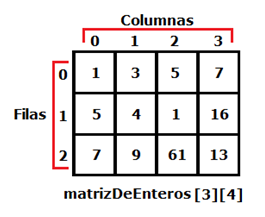SQL Server has many built-in functions. SQL string functions are primarily utilized for string manipulation. Cutting blanks off a string value for display.

You can use LEN function to find the length of a string. It takes a single parameter containing. Escapes special characters in a string and returns a new string with escaped characters: STRING _SPLIT: A table-valued function that splits a string into rows of substrings based on a specified separator. STUFF: Delete a part of a string and then insert another substring into the string starting at a specified position. The STRING _SPLIT() function is a table-valued function that splits a string into a table that consists of rows of substrings based on a specified separator.
String-valued functions return NULL if the length of the result would be greater than the value of the max_allowed_packet system variable. For functions that operate on string positions, the first position is numbered 1. Using SUBSTRING with a character string The following example shows how to return only a part of a character string. Replaces all occurrences of a specified string value with another string value. Transact- SQL Syntax Conventions.

Syntax REPLACE ( string _expression , string _pattern , string _replacement ) Arguments. Is the string expression to be searched. Left part of the given string till the specified number of characters will come as output for a given string. Working with strings is one of the most common T-SQL coding tasks, whether you’re trimming blanks off a string value for display or concatenating two strings together.
Use the LEN function to determine a source string’s length. String functions are used to perform an operation on input string and return an output string. SQL functions are built into Oracle Database and are available for use in various appropriate SQL statements. If you call a SQL function with an argument of a datatype other than the datatype expected by the SQL function, then Oracle attempts to convert.
Returns the position of a String within a String , expressed in UCScode points INSTRReturns the position of a String within a String , expressed in UCScode points LENGTH The LENGTH functions returns the length of char. LENGTH calculates length using characters as defined by the input character set. SQL String Functions and Operators. In the following table, string , string string string _n, substring and delim refer to a string literal in quotes, a literal value that can be converted to a string (such as a number), or column from a table that can be converted to a string.
NULL arguments are not valid and will return NULL. Following are the string functions defined in SQL : ASCII(): This function is used to find the ASCII value of a character. SQL provides us with a number of tools that give us the ability to manipulate string values.
This section of the site gives details of the various functions available and demonstrates real world examples of their use. These functions accept an input string , and return either a string or a numeric value. There are many string functions within SQL at your disposal. Sql string function is a built-in string function.
It perform an operation on a string input value and return a string or numeric value. Let’s take some examples of using the REPLACE() function to understand how it works. A) Using REPLACE() function with literal strings. When working in a multibyte character set, check carefully whether the function being used returns information concerning characters or bytes. PostgreSQL is a very powerful object-relational database management system.
It provides a large number of functions and operators for the built-in data types, thereby relieving the developers from simpler tasks and focusing on the solution to the bigger problem. If you need further character string functions , we can add these very fast. Summary: in this tutorial, you will learn how to use the SQL REPLACE function to search and replace all occurrences of a substring with another substring in a given string.
Introduction to the SQL REPLACE function. Sometimes, you want to search and replace a substring with a new one in a column e. The SUBSTR functions (SUBSTR, SUBSTRB, SUBSTRC, SUBSTR and SUBSTR4) return a portion of string , beginning at a specified position in the string. The functions vary in how they calculate the length of the substring to return. SUBSTR calculates lengths using characters as defined by the input character set.
The starting position for extraction. The first position in the string is always 1. It is the number of characters to extract.
Brak komentarzy:
Prześlij komentarz
Uwaga: tylko uczestnik tego bloga może przesyłać komentarze.